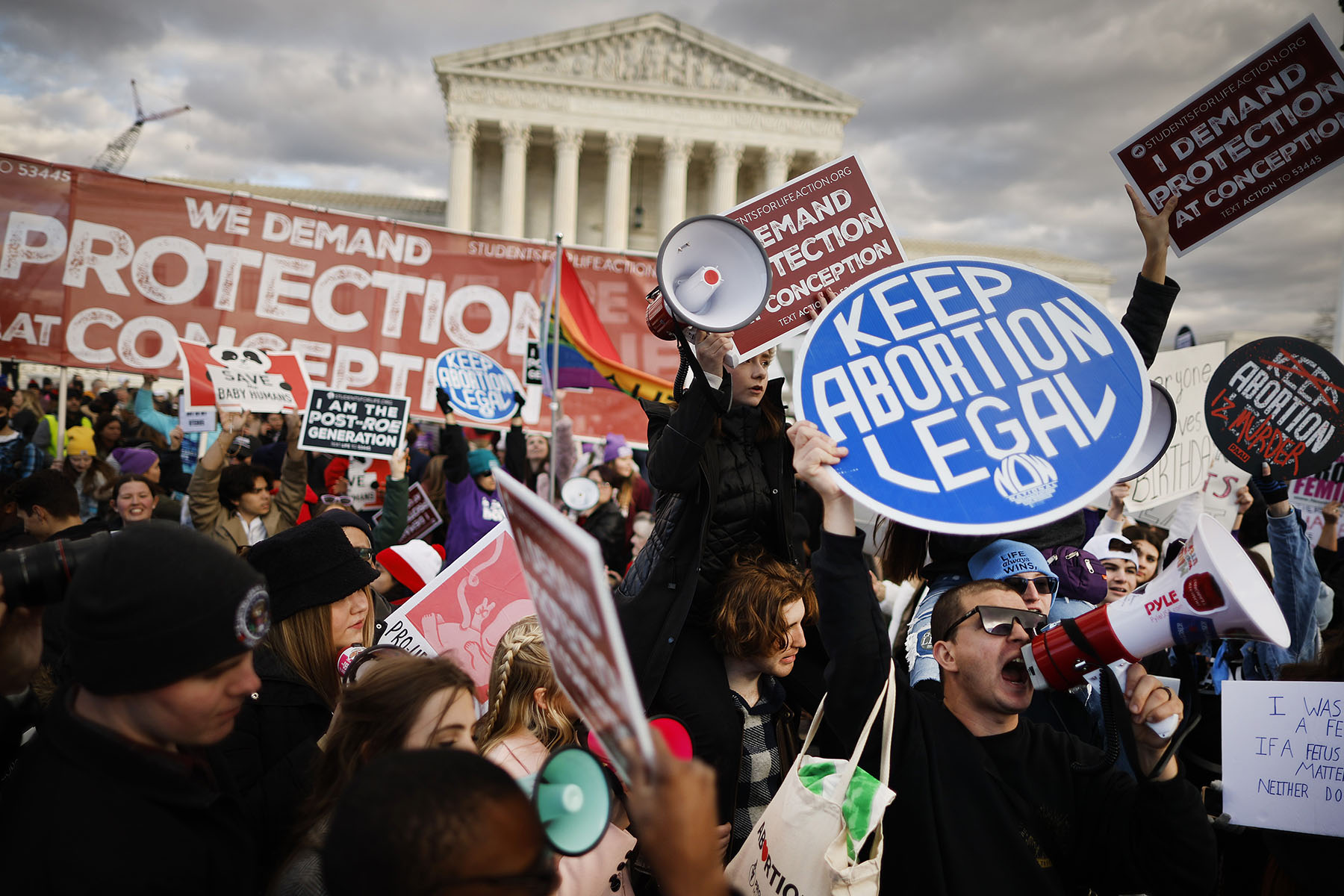Editor’s note: This article has been updated throughout.
A federal appeals court ruled this week that hospitals in Texas aren’t required to provide abortion in life-saving cases, and the Supreme Court on Friday allowed Idaho to fully enforce its abortion ban even in cases of medical emergencies.
These are the latest decisions in a complex legal battle over a federal law known as the Emergency Medical Treatment and Labor Act, or EMTALA. That law says that hospitals must provide stabilizing care to patients experiencing medical emergencies. Attorneys for the federal government argue EMTALA enshrines the right to abortions in life-saving situations, even in states with strict laws around the procedure.
Tuesday’s Texas ruling, issued by the conservative U.S. Court of Appeals for the Fifth Circuit, rejects that argument. But it likely won’t be the final word. On Friday, the Supreme Court said it would hear arguments in a case out of Idaho weighing similar questions about EMTALA. As the legal fight is under way, Idaho, like Texas, is allowed to outlaw abortions that would be considered life-saving emergency care.
The 19th spoke to legal experts and physicians who provide abortions to help illustrate what precisely is at stake, and what pregnant people’s ability to access emergency abortions looks like right now.
What is being decided in this case? And what does EMTALA protect?
In the weeks after Roe v. Wade was overturned — allowing states to enforce laws banning abortion — the U.S. Department of Health and Human Services issued guidance to hospitals to clarify that emergency care protected under EMTALA could include abortion.
The guidance said that doctors should provide abortions when they are necessary to stabilize a patient, saying the federal law trumped state-specific abortion prohibitions.
The state of Texas argued in court that this guidance amounts to illegal coercion by the Biden administration, forcing doctors and hospitals into providing abortions. In August 2022, a federal court agreed with the state, blocking the federal EMTALA rule from taking effect in Texas.
The federal government appealed the case, which was then heard by the Fifth Circuit. Tuesday’s ruling means the lower court ruling — preventing the EMTALA guidance from taking effect in Texas — stays in effect.
-
More from The 19th
- Dark money is flowing to groups trying to limit medication abortion. Leonard Leo is again at the center.
- Texas Supreme Court temporarily halts ruling allowing Dallas woman to get an abortion
- Pregnancy loss in America has long been a lonely experience. Abortion bans have made it perilous.
A separate case concerning these same questions was filed in August 2022 in Idaho. The Department of Justice, which initiated the lawsuit, has argued that Idaho’s abortion ban violates EMTALA.
That law, one of the strictest in the country, says doctors who perform emergency abortions can face criminal penalties, but allows them to defend themselves in court by arguing that the care they provided was necessary to save the pregnant person’s life. This legal structure is known as an “affirmative defense,” and physicians say few feel safe providing even life-saving abortion care.
That case went before the Ninth Circuit Court of Appeals, which in October reversed a previous ruling to block that provision of Idaho’s law while litigation proceeds. That meant abortions could be provided in medical emergencies. Idaho asked the Supreme Court to intervene and got an answer on Friday. The court will hear arguments in the case in April. Until then, the full law can once again take effect.
Do these rulings extend outside of Texas or Idaho?
These rulings are specific to those states. The protection offered by EMTALA remains in effect in other states where abortion has been banned and where the federal guidance has not been challenged.

What kinds of abortions are affected by EMTALA?
The EMTALA guidance applies when treating patients who develop pregnancy-related complications in which terminating the pregnancy is the medically necessary course of action. According to the guidance, that could include ectopic pregnancy, complications from pregnancy loss and preeclampsia. Doctors suggested to The 19th that other conditions could include preterm premature rupture of membranes, placental abruption, sepsis or heavy bleeding.
Most people receiving abortions are not experiencing medical emergencies and are not seeking care in hospitals, which means that the EMTALA guidance has limited implications.
“This is affecting the smallest number of abortions you can imagine,” said Greer Donley, an associate professor of law at the University of Pittsburgh. “Even for the small subset of abortions that are because of a medical emergency, this will only affect a small percentage of those — we’re talking about the margins of what those exceptions mean.”
For instance, she noted the EMTALA guidance would not ensure access to abortion for people who discover fatal fetal anomalies, even though staying pregnant in such situations can have long-term and potentially life-threatening health implications for the pregnant person as well.
Patients experiencing cancer treatment may require an abortion if their chemotherapy is incompatible with staying pregnant. In some situations, pregnancy can pose a threat for patients experiencing high blood pressure, heart disease or kidney disease. But if it is not definite that a patient would die without medical intervention — if, for instance, the patient’s medical history simply makes pregnancy more dangerous but not necessarily fatal — those situations wouldn’t be covered by the narrow definition of what federal law considers an emergency.
What happens if someone needs an abortion in these circumstances?
In theory, some of the exceptions covered under the EMTALA guidance should be available in many states with abortion bans — including Texas, where the law includes nominal exceptions when termination would save the pregnant person’s life. But in practice, physicians have said those exceptions are incredibly difficult to utilize, and that they are typically forced to delay care until a patient’s condition has sufficiently deteriorated. Many have directed their patients to seek care in a state with legal abortion instead.
EMTALA is enforced by individual complaints — so in emergency medical cases where patients should receive an abortion but were denied one, they could file a request that the federal government investigate the hospital’s practices. Hospitals found to have violated the law can face financial penalties. Still, that relies on patients knowing they are able to file complaints and having the resources to do so.
Only two hospitals have been cited for denying a patient emergency abortion care, following complaints filed by a Missouri woman who was denied an abortion after experiencing preterm premature membrane rupture. The hospitals were found to have violated federal law, but the Biden administration has not announced if it issued any fines. And even so, some legal experts note that the financial punishment for violating EMTALA poses less of a risk to hospitals than the criminal penalties involved if a hospital is found to have violated a state abortion ban.
“EMTALA preempts state law and that’s a fact,” Donley said. ”But until states view it that way or litigation forces them to, it’s not going to force them to” provide abortions, even in those limited medical emergencies.
Why aren’t more doctors using EMTALA exceptions?
Physicians said that for the most part access to care — even in medical emergencies covered by EMTALA — can vary based on the state.
“Patients in one city or at one institution may be taken care of by providers that fear that they will be criminalized if the patient is not close enough to death that no one would deny their ‘reasonable medical judgment,’” said Dr. Nikki Zite, an OB-GYN at the University of Tennessee, a state where abortion is almost completely illegal. “But in another city or at a different institution, the physician [may be] more supported by their institution to practice evidence-based care and can act when the patient is stable.”
Part of the issue is that access to the abortion protected under the guidance still depends on how individual hospitals interpret the law, and how concerned they are about risk of breaking their individual state’s law.
Some doctors said that the presence of the EMTALA protections makes them feel more secure in providing emergency care that they otherwise would not feel comfortable offering — and their absence is a deterrent.
Dr. Stacy Seyb, a maternal-fetal medicine specialist in Idaho, said he has seen pregnant patients with sepsis sent out of state for care during the period when the federal EMTALA protections were blocked in his state prior to October. Now, those protections are once again blocked, meaning physicians are once again unlikely to feel safe providing abortions, even under dire medical circumstances.
And even when emergency abortions were allowed, he said, there were limits to how safe physicians felt. Penalties vary based on an individual state’s law, but doctors found to have violated a state’s abortion ban can generally face steep fines and even jail time.
“It really is not adequate for providers to feel like they have a true patient-doctor relationship without threat of some sort of legal jeopardy,” he said.








